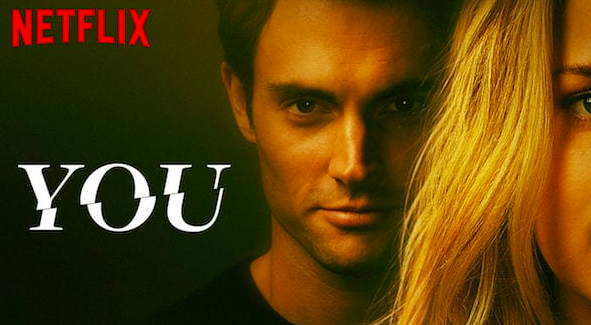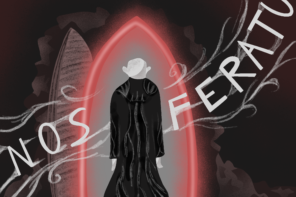If you’re anything like me, chances are you’ve spent the last couple weeks binging one of Netflix’s new crime shows. In the past few months, the streaming service has released a slew of new series, ranging from documentaries such as Conversations with a Killer: the Ted Bundy Tapes and Don’t f*ck with Cats: Hunting an Internet Killer to the romantic drama, You. Our infatuation with these shows is unsurprising given that, according to ET Canada, most of the top-rated TV shows for the past several decades have been related to crime or policing.
So, why are we so captivated by crime and deviance? Our obsession with detectives, murderers and mobsters is hardly a recent phenomenon. CBS started broadcasting the hit show Man Against Crime, a series about a detective solving violent crimes, in 1949, only three years after the very first TV shows began airing in the United States. The fact that this was only one of the dozens of shows about violent crime that was broadcasted during the first decade of TV demonstrates that crime shows have been a central feature of TV programming since its inception. Clearly, something about violent crime and serial killers hiding under the guise of a “normal” person is intriguing to us viewers.
There’s a simple reason as to why this might be. We enjoy crime shows because they give us access to all of the things we cannot see in everyday life. We watch these captivating and oftentimes disturbing shows to get an adrenaline rush, or even just to escape reality for a bit.
While our captivation with crime shows is not unusual or even new, TV shows or movies that broadcast serial killers are problematic as they normalize and even glorify acts of violence.
We watch these captivating and oftentimes disturbing shows to get an adrenaline rush, or even just to escape reality for a bit.
The inevitable normalization of serial killers is evident when we look at the recent rise of school shootings in North America. In his article “Thresholds of Violence,” Stanford sociologist Granovetter sought to understand why a large number of otherwise normal people would join a violent riot. He explains that the first person to start a riot is predisposed to aggression and violence, while the hundredth person is a virtuous citizen who will join a riot if everyone around him was involved, even though doing so goes against his beliefs. In other words, while an early actor of violence may be naturally inclined to anti-social behaviour, once this behaviour becomes popularized, ordinary, non-violent people join in too.
Malcolm Gladwell uses Granovetter’s model to explain the school-shooting epidemic, arguing that the first seven major school shootings were instigated by young men who were deeply psychotic, traumatized, or were textbook psychopaths. However, those who instigate school shootings afterwards were more neurotypical than the earlier ones were.
Sociologists Ralph Larkin and Nathalie E. Paton found that eight of the eleven school shootings outside of the United States between 1999 and 2007 were “copycat” versions of one of the first major school shooting cases. Take the 1999 Columbine High School massacre, committed by Eric Harris and Dylan Klebold. Eric Harris was a classic psychopath who fantasized about rape and mutilation in his school journal, and Dylan Klebold exhibited similar tendencies of violence.
In contrast, post-Columbine shooters, like John David LaDue, were not nearly as psychotic. In 2014, LaDue attempted to carry out one of the worst school massacres in American history. Yet, unlike Harris, LaDue was not predisposed to violence, nor was he mentally ill, according to the diagnosis of three psychologists. Like many teenage boys, he was simply fascinated with guns and explosions. He idolized Eric Harris and felt it would be appropriate to express his obsession in a similar way.
Similar to the first major school shooters, early serial killers like Luka Magnotta and Ted Bundy were truly mentally ill. Luka Magnotta was a textbook psychopath, who started by torturing animals before moving on to murdering and mutilating strangers. Ted Bundy was a serial murder, rapist and necrophiliac, confessing to having committed thirty homicides. Like Magnotta, Bundy was charming, manipulative and felt no guilt or remorse for his cruel behaviour. These individuals had imaginations wild enough that they didn’t need to imitate acts of violence from anyone else. However, if we’re not careful, other, less troubled individuals will eventually start imitating these infamous serial killers.
So, how do we avoid normalizing serial killings and preventing another form of school shooting epidemics? Numerous studies suggest that media reporting of mass killings and school shootings increases the incidence of similar offences in the community. In order to prevent more violent crimes, the media should be more careful in how they report these phenomena. For instance, journalists ought to avoid publishing the names or photos of the instigator or any self-serving statements they make, and instead they should centre their broadcasting time on the victims of these crimes and their families. In this way, copycat killers will have less screen-time access to find serial killers to glorify, and they will be less inclined to contemplate these atrocious actions for attention.
If the media wants to curb school shootings and copycat serial killers, more responsible media depictions of serial killers — both in journalism and in entertainment — are necessary.
Moreover, broadcasting movies and/or TV-shows about serial killers, especially ones that glorify them, is a particularly motivating factor for other, less troubled individuals to commit copycat crimes. The serial killers in Netflix’s Conversations with a Killer: the Ted Bundy Tapes and the show You are charismatic and portrayed by handsome actors, leaving countless young women and men lusting over them. Lisa Little, a childhood friend of one of Ted Bundy’s victims, says she’s “tired of turning on the news and seeing his face.” She tells First Coast News that “the fact that they’re making this new movie outrages me, especially because they’re using Zac Efron, who’s so cute.” Broadcasting these serial killers by making them empathetic, handsome, and likeable only glorifies their shocking murders and will ultimately inspire similar appalling incidences.
If the media wants to curb school shootings and copycat serial killers, more responsible media depictions of serial killers — both in journalism and in entertainment — are necessary. Hollywood’s most handsome actors should be playing spies and superheroes, not psychopaths.








